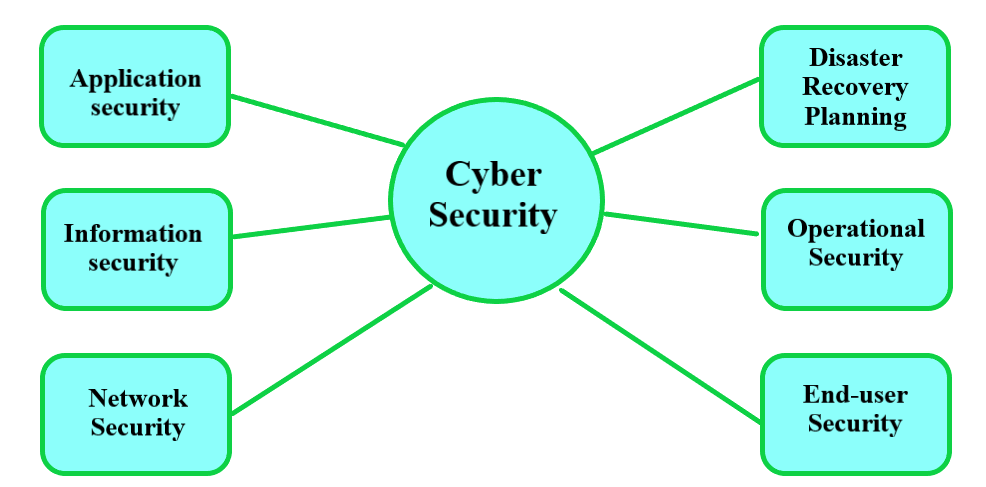What are the basics of computer security?
Summary of the Article:
Computer security is a crucial aspect of protecting data and information. It can be divided into various types such as network security, cloud security, endpoint security, mobile security, IoT security, application security, and zero trust. The three main areas of computer security are confidentiality, integrity, and availability. The four pillars of computer security are prevention, protection, detection, and response. The four fundamentals of security include confidentiality, integrity, availability, and non-repudiation. Additionally, the elements of computer security that IT professionals need to know are availability, integrity, authenticity, confidentiality, and utility. Furthermore, there are seven aspects of security, which include attitudes, behaviors, cognition, communication, compliance, norms, and responsibilities. The six basic security concepts that need to be covered by security testing are confidentiality, integrity, authentication, availability, authorization, and non-repudiation. The seven layers of cybersecurity consist of mission-critical assets, data security, endpoint security, application security, network security, perimeter security, and the human layer. The four C’s in security are code security, container security, cluster security, and cloud security. The five core functions of cybersecurity are identify, protect, detect, respond, and recover. Finally, the four elements of cybersecurity that businesses should implement and maintain are cloud security, perimeter security, network security, endpoint security, application security, data security, and security operations center (SOC). The six Ps of security include preparation, prevention, protection, professionalism, partnership, and proficiency.
Questions and Answers:
Question 1: What are the 5 types of computer security?
Answer: It can be divided into seven main pillars: Network Security, Cloud Security, Endpoint Security, Mobile Security, IoT Security, Application Security, and Zero Trust.
Question 2: What are the three main areas of computer security?
Answer: When we discuss data and information, we must consider the CIA triad. The CIA triad refers to an information security model made up of the three main components: confidentiality, integrity, and availability.
Question 3: What are the 4 pillars of computer security?
Answer: Every security posture is built on four pillars: Prevention, Protection, Detection, and Response.
Question 4: What are the 4 fundamentals of security?
Answer: There are four main principles of information security: confidentiality, integrity, availability, and non-repudiation.
Question 5: What are the 4 elements of computer security?
Answer: The elements of computer security that modern IT professionals need to know are availability, integrity, authenticity, confidentiality, and utility.
Question 6: What are the 7 aspects of security?
Answer: The model consists of seven dimensions: attitudes, behaviors, cognition, communication, compliance, norms, and responsibilities.
Question 7: What are the six basic security concepts?
Answer: The six basic security concepts that need to be covered by security testing are confidentiality, integrity, authentication, availability, authorization, and non-repudiation.
Question 8: What are the 7 layers of cybersecurity?
Answer: The Seven Layers Of Cybersecurity include mission-critical assets, data security, endpoint security, application security, network security, perimeter security, and the human layer.
Question 9: What are the 4 C’s in security?
Answer: These four layers are Code security, Container security, Cluster security, and Cloud security.
Question 10: What are the 5 core functions of cybersecurity?
Answer: The core functions, identify, protect, detect, respond, and recover help organizations in their effort to spot, manage, and counter cybersecurity events promptly.
Question 11: What are the 4 elements of cybersecurity?
Answer: The key cybersecurity elements that businesses should implement and maintain are cloud security, perimeter security, network security, endpoint security, application security, data security, and security operations center (SOC).
Question 12: What are the six Ps of security?
Answer: The six Ps of security are preparation, prevention, protection, professionalism, partnership, and proficiency.

What are the 5 types of computer security
It can be divided into seven main pillars:Network Security. Most attacks occur over the network, and network security solutions are designed to identify and block these attacks.Cloud Security.Endpoint Security.Mobile Security.IoT Security.Application Security.Zero Trust.
What are the three main areas of computer security
When we discuss data and information, we must consider the CIA triad. The CIA triad refers to an information security model made up of the three main components: confidentiality, integrity and availability.
What are the 4 pillars of computer security
Every security posture is built on four pillars:Prevention: Preparing and training before a threat/attack.Protection: Stopping a known threat/attack.Detection: Detecting an unknown threat/attack.Response: Taking action towards a threat/attack.
What are the 4 fundamentals of security
There are four main principles of information security: confidentiality, integrity, availability, and non-repudiation.
What are the 4 elements of computer security
What are the elements of computer security that modern IT professionals need to knowAvailability.Integrity.Authenticity.Confidentiality.Utility.
What are the 7 aspects of security
The model consists of seven dimensions: attitudes, behaviors, cognition, communication, compliance, norms, and responsibilities.
What are the six basic security concepts
The six basic security concepts that need to be covered by security testing are: confidentiality, integrity, authentication, availability, authorization and non-repudiation.
What are the 7 layers of cyber security
The Seven Layers Of CybersecurityMission-Critical Assets. This is data that is absolutely critical to protect.Data Security.Endpoint Security.Application Security.Network Security.Perimeter Security.The Human Layer.
What are the 4 C’s in security
These four layers are Code security, Container security, Cluster security, and Cloud security. Let's take a deep dive into each of the C's to understand them better and also answer some of the most asked questions about the 4C's.
What are the 5 core functions of cyber security
The core functions: identify, protect, detect, respond and recover; aid organizations in their effort to spot, manage and counter cybersecurity events promptly. The NIST control framework will help empower continuous compliance and support communication between technical and business-side stakeholders.
What are the 4 elements of cyber security
Let's discuss some of the key cybersecurity elements businesses should implement and maintain to safeguard their assets from cyberattacks:Cloud Security.Perimeter Security.Network Security.Endpoint Security.Application Security.Data Security.SOC (Security Operations Center)
What are the six Ps of security
These six Ps are preparation, prevention, protection, professionalism, partnership, and proficiency. The first P preparation in private security involves planning for potential risks and threats.
What are the 7 security domains of information security
They are as follows: User Domain, Workstation Domain, LAN Domain, LAN-to-WAN Domain, Remote Access Domain, WAN Domain, and System/Application Domain. Each of these domains is viewed as portals for attackers if countermeasures are missing or fail.
What are the 7 elements of security model
The 7 Elements of Human Security are defined by the United Nations as: Economic, Environmental, Food, Health, Political, Personal and Community. We design projects and initiatives with our partners that holistically address these areas of Human Security.
What are the five A’s of information security
The U.S. Department of Defense has promulgated the Five Pillars of Information Assurance model that includes the protection of confidentiality, integrity, availability, authenticity, and non-repudiation of user data.
What are the 7 P’s of information security
We outline the anatomy of the AMBI-CYBER architecture adopting a balanced scorecard, multistage approach under a 7Ps stage gate model (Patient, Persistent, Persevering, Proactive, Predictive, Preventive, and Preemptive).



0 Comments